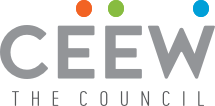
Programme Overview
The initiative supports enterprises with cleantech for livelihood applications to undertake large-scale commercial deployment for their solutions. This is done through an integrated gendered lens and we use the evidence generated to catalyse the sector.
The gap
India’s rural economy, comprising 119 million farmers and 34 million microenterprises, is constrained by unreliable electricity access; more than four million microenterprises mention lack of reliable electricity as the biggest challenge to their businesses.
The electricity gap for the rural economy could be addressed through clean energy innovations, which have a market potential of over $50 billion and can impact 3 crore livelihoods in India. Currently, while these innovations exist, their deployment is limited. They are struggling to scale due to a lack of policy and financial support and are unable to unlock support due to lack of evidence, creating a vicious circle.


Bridging the gap
In order to break the vicious cycle at the commercial valley of death and trigger the $50 billion market, Powering Livelihoods envisages a four-fold approach with gender-inclusive strategies at its core. The programme will provide enterprise support to enable women-friendly product enhancements and commercial deployments, generate evidence at scale, disseminate knowledge to key stakeholders, and unlock sectoral support and growth.
Sectoral Potential and Impact
Powering Livelihoods (PL) has planned an impact assessment study in two phases to adequately capture the impact of the technologies in PL’s portfolio, which represent more than 80 per cent of the sector in terms of revenue. In 2022, we undertook Phase I of the impact assessment study, involving end-users of six different DRE-livelihood technologies
Economic Impact
87% of end user experienced increase in income
33% increase in annual income was experienced by a typical user
Social Impact
81% users experienced an increase in confidence to buy assets and save money
77% users had improved perception of clean energy sources
Impact on productivity
2X increase in productivity of silk reeling users compared to earlier reeling practices
2 hours of average reported time saved for users in fodder collection & feed preparation
Impact on women
91% women users report increase in knowledge/skills
86% women users mention increase in agency to make decisions
84% women highlight increased participation in public/community events
Roadmap

Call for Applications
December 2020 – January 2020

Application Screening and Enterprise Shortlisting
January 2020 – April 2020

COVID-19 support to Shortlisted Enterprises
June 2020 – August 2020

Cohort Launch
August 2020

Incubation Programme
September 2020 – March 2023

Cohort Graduation
March 2023
Powering Sustainable Livelihoods for Women
Watch how ‘Demo Champion’ Neetu Tandon’s entrepreneurial journey is powered by an energy-efficient food-processing machine.
Watch how solar-powered refrigerators are changing the livelihoods of women working in the dairy value chain in Rajasthan.
Watch how women-led Farmer Producer Organisations (FPOs) in Andhra Pradesh are reducing on-farm waste and increasing incomes through solar dryers.
Intended Impact
We aim and measure the impact of Powering Livelihoods at three levels: End-user, Enterprise and Ecosystem
End-user Level

40,000 beneficiaries
using clean energy-powered livelihood solutions with over 1/3rd being women.

20%
increase in income of at least 3/4th of the beneficiaries.

INR 5 Cr
unlock end-user credit for DRE livelihood technologies
Enterprise Level

15
cleantech enterprises onboarded

4X
increase in cumulative revenue of the programme enterprises
20,000
DRE livelihood technology deployments
Ecosystem Level
- Engage and support state departments towards DRE livelihoods programmes’ design and implementation
- Facilitate opportunities for end-users to share their impact stories.
- Expanding Go-To-Market (GTM) partnerships, including new kinds of partners such as corporate partners with rural distribution channels and Cluster Based Business Organisations (CBBOs).
- Facilitate convenings at the global, national and sub-national level.
- Expanding partnerships with State Rural Livelihood Missions (SRLMs) in four new states.
- Disseminate the socioeconomic and environmental impact.
A joint initiative
CEEW and Villgro have co-conceptualised Powering Livelihoods and are collaborating to catalyse India’s rural economy through clean energy-based solutions.



